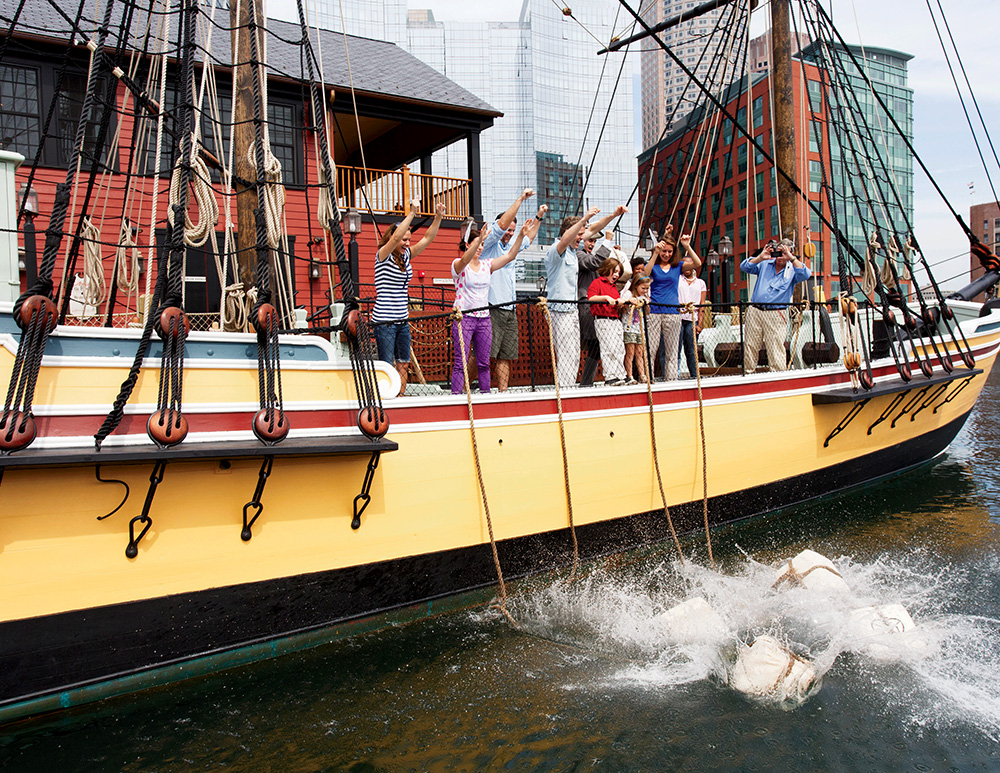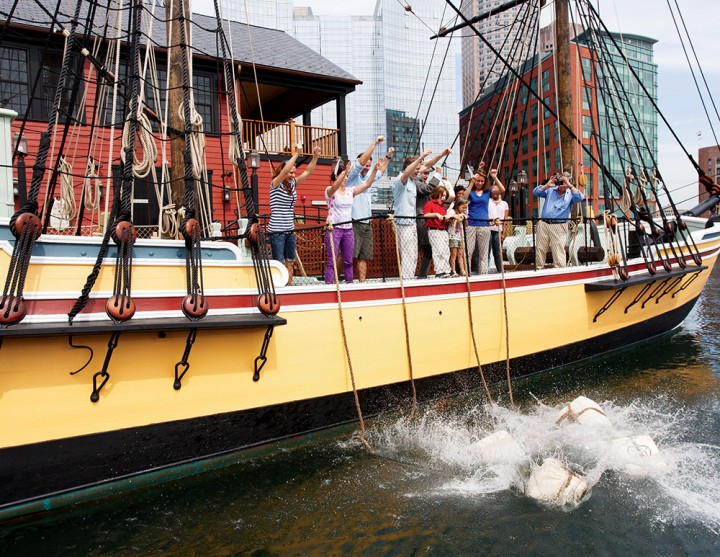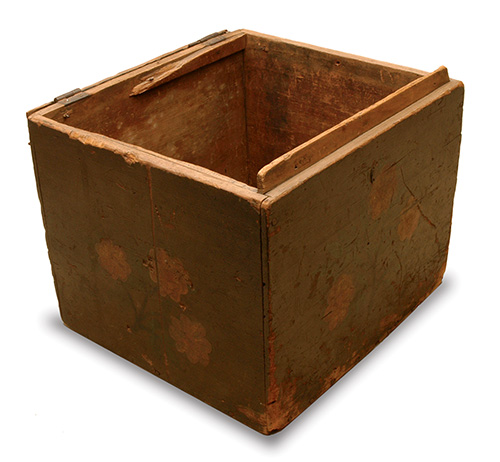Boston Tea Party Chest | Local Treasure
A simple chest that once held dolls, clothes, and kittens helps tell the story of the Boston Tea Party and a nation’s birth.

“Huzzah!” Visitors to the Boston Tea Party Ships get to channel the spirit of the colonial Sons of Liberty as they toss canvas-wrapped replica tea chests into Fort Point Channel.
Photo Credit: Michael Blanchard Photography/Boston Tea Party Ships & Museum
Photo Credit : Michael Blanchard Photography/Boston Tea Party Ships & Museum
On the morning of December 17, 1773, a Boston teenager named John Robinson spotted a wooden tea chest half-buried in the sand. Along with more than 300 others, it had been dumped into Boston Harbor the night before by rebel colonists protesting “taxation without representation.” Destroying more than 90,000 pounds of East India Company Tea, this treasonous act in defiance of the British Crown became a battle cry of the Patriot cause. Knowing the risk should he be caught with it, John carried the chest home anyway, securing a rare memento of what we now call the Boston Tea Party.
Of the 340 chests tossed overboard that night, only two survived. (The other is at the Daughters of the American Revolution Museum in Washington, D.C.) Preserved within the Robinson family for generations, where it became a home for dolls, dress-up clothes, and even a litter of kittens, the chest’s story endured thanks to family pride and countless diligent re-tellings. Since 2012, the chest has been the center-piece of the reopened Boston Tea Party Ships & Museum. Backed by oral and documented history, plus forensic analysis confirming the existence of not just the same salt-water found in Boston Harbor but period-accurate wood and nails, the Robinson Half Chest (as it’s now known) is a compelling piece of American history.

Today, the box, measuring just 10 by 13 inches, rotates slowly within a glass cylinder over the same body of water into which it was thrown nearly 250 years ago. To see it is to experience a unique thrill. “It’s a very significant object,” says museum executive director and vice-president Shawn Ford, “because it’s the tool, the symbol, on which the Patriots put their hands and cracked open, and then poured the tea into Boston Harbor.”
And when you stand aboard a floating replica of one of those tea-bearing ships, you can’t help but hear the echoes of that act. The museum touches both the imagination and the senses. Its state-of-the-art graphics tell of the tensions leading up to December 16, and visitors are encouraged to incite their own rebellion by throwing floating, retractable “crates” of tea overboard with a hearty “Huzzah!”
But it’s the tea chest that packs the biggest historical punch (although the concluding film reenactment of the Battles of Lexington and Concord comes bullet-whizzingly close). Adding valuable color and shape to a familiar tale, Robinson’s chest gives new voice not just to the events of the Boston Tea Party but to the larger story as well—the story of the New England colonists who rebelled against the most powerful nation in the world, and won.
“I want people to leave here knowing that this indeed was the single most important event that led to the American Revolution,” Ford says. “Ninety percent of all the action, all the battles, all the bloodshed, happened here in Boston and New England.
“Philadelphia gets a lot of historical credit, but let’s face it,” he says with a smile, “Philadelphia did the paperwork.”
And it’s that sacrifice that Ford hopes visitors will remember most when they leave. “We gave up our lives here, and I think that’s the story that people leave here in awe of,” he notes. “Who of us today would throw away our livelihood, our savings, our wealth, our property, even tear apart our families, with no guarantee of success—in fact, with every guarantee of failure—just based on an idea? Now that’s an incredible story.”
And thanks to John Robinson’s boldness on that cold December morning, and the proud generations of Robinsons who followed, it’s a story being told more clearly and colorfully in Boston today than ever before.
Each year the museum, in collaboration with the Old South Meeting House, hosts a lively reenactment of the Boston Tea Party that we highly recommend. This year’s event is scheduled for Wednesday, December 16, 2015.
Boston Tea Party Ships & Museum. 306 Congress St., Boston, MA. 617-338-1773; bostonteapartyship.com








More pictures